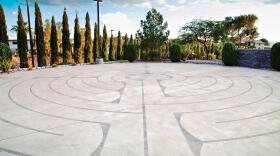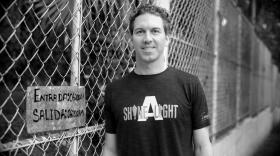In the civil rights movement, major figures such as Martin Luther King Jr. — who delivered two speeches in Las Vegas in April 1964 — made history on the national stage. That national movement inspired what happened in the Las Vegas Valley, but it wasn’t a one-way street. It’s fascinating to consider the striking parallels between what happened at home and what was happening across the nation.
The first stirrings of a civil rights movement in Las Vegas appear to have come in 1926 with the formation of its first chapter of the NAACP, starting on the heels of the Ku Klux Klan starting a Klavern in town. The first NAACP chapter leader, A.B. “Pops” Mitchell, had had a ranch near the present-day Mob Museum. But by 1930, fewer than 150 African Americans lived in Las Vegas, population 5,000. One of the first battles wasn’t far off. When the builders of the Hoover Dam refused to hire African Americans, residents formed the Colored Citizens Labor and Protective Association of Las Vegas in 1932. Their pressure and a change in administrations in Washington, D.C., prompted the hiring of a few African Americans, but not many. They found it little better in Las Vegas: racism and red-lining forced African Americans west of the railroad tracks, in West Las Vegas or the Westside.
The next leap came during World War II. Basic Magnesium recruited black workers from two mill towns, Fordyce, Arkansas, and Tallulah, Louisiana. Others found work in casinos and lived in West Las Vegas, where the clubs of Jackson Street rivaled the small casinos on Fremont Street. But the growing black population needed more than casinos. By the mid-1950s, though, Las Vegas’s population had grown to 40,000, and that’s when another national leader came in: W.E.B. DuBois, sociologist, historian, and co-founder of the NAACP. One of his ideas was that of developing the Talented Tenth or, as he wrote, “developing the Best of this race that they may guide the Mass away from the contamination and death of the Worst.”
Civil rights activists in Las Vegas embraced the idea of a Talented Tenth. Lubertha Johnson had become the area’s first black nurse and promoted job opportunities for African Americans in education and hospitals. Basic Magnesium employee Woodrow Wilson began Westside Federal Credit Union for African Americans. Ministers like Donald Clark preached at black churches, and provided another important group of leaders.
A group of arrivals in the 1950s signaled another period of growth of the black community. Charles West became the first African American doctor in Southern Nevada. James McMillan became the first African American dentist. West and McMillan helped start black newspaper The Voice, and Alice Key wrote for it. A few years later, attorney Charles Kellar moved to Las Vegas and became active in the NAACP. In 1955, the Moulin Rouge opened, energizing the civil rights movement. The most prominent leader to emerge from the Moulin Rouge was Bob Bailey, a showbiz veteran who served as emcee and hosted TV shows.
Las Vegas’ own Talented Tenth did something that hadn’t been possible before in West Las Vegas on such a scale: They organized. When local dairies wouldn’t hire black deliverymen, they organized boycotts. They boycotted West Las Vegas casinos until they employed African American dealers. They began placing candidates on the ballot and campaigning for officeseekers willing to take stands for civil rights — and they became involved in both major political parties.
It’s no coincidence that the 1960s marked a turning point in race relations in Southern Nevada. The national movement had an impact: the sit-ins starting in February 1960 in Greensboro, North Carolina, prompted the national NAACP to ask locals to act. McMillan, the Las Vegas chapter’s president, asked the mayor for action against segregation in Las Vegas within 30 days — or else the black community would demonstrate. Accounts differ on details, but a majority of hotel-casino owners agreed to desegregate and allow African Americans to patronize their resorts. The Moulin Rouge Agreement of March 25, 1960, wasn’t on paper, but it was a signal moment in the local movement.
Three years later, the lack of better jobs for African Americans prompted local civil rights leaders to plan a demonstration that would have coincided with a world heavyweight championship fight being held in Las Vegas. The casino owners gave in, but it wasn’t until a 1971 lawsuit that made them give it more than lip service. That same year, Nevada followed the federal government in approving a fair housing law. This came after the state passed its own civil rights act in 1965, and after reapportioning the Legislature to reflect the population growth in Southern Nevada. Consequently, Wilson became the first African American legislator, the first of many from the ’70s onward.
That growth also attracted new white residents who sympathized with civil rights. Hank Greenspun moved to Las Vegas in 1946 and took over what became the Las Vegas Sun in 1950. James McMillan said, without it, “we wouldn’t have had a chance to get anything in front of the public.” Lloyd Katz moved to town to run movie theaters, which he desegregated. Attorneys like George Rudiak, Dean Breeze and Ralph Denton worked for civil rights. Democrat Grant Sawyer made clear to the black community when he ran for governor in 1958 that he would support civil rights statewide and did. Mayors C.D. Baker (1951-1959) and Oran Gragson (1959-1975) promoted economic growth in West Las Vegas.
Just before he died, King started organizing a “poor people’s campaign.” That welfare movement became an important part of the civil rights battles in Southern Nevada. Former Strip housekeeper Ruby Duncan and other welfare mothers organized marches and demonstrations, including bringing their children to the Stardust Hotel for an eat-in (literally, and the management refused to accept checks for the meals), and the mothers briefly went to jail. Duncan started Operation Life to promote welfare reform and provide aid and training to West Las Vegans. These efforts brought a medical clinic, a library, nutrition programs, and senior housing to the area.
What the civil rights leaders of the 1950s and 1960s and the welfare rights leaders of the 1960s and 1970s sought were both similar and different. But they both knew how to work both sides of the aisle, and to organize, and to stick with it. They learned from the likes of King and Johnson — and so can we.
Michael Green is an associate professor of history at UNLV.








